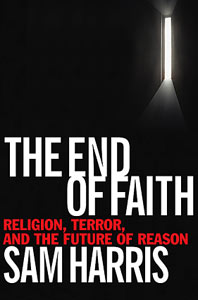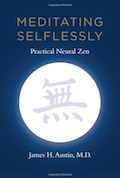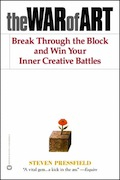It was a fast read; I completed it in a couple days. Very poetically written and rang true. A book about the nature of art, and about the nature of the mind when that mind’s owner desires to create art: To write a book; to undertake any endeavor which represents an expenditure of creative energy.
The author, Steven Pressfield, claims that the most important thing to overcome is one’s own internal resistance. And that this is a natural feeling, a reaction of the mind when confronted with something that is difficult for it. It is the self-doubt, the nagging thought that “maybe I should be doing something different”, the desire for procrastination.
The book opens with a powerful example. Hitler himself went to art school, but he didn’t / couldn’t paint because he experienced resistance towards it. Maybe he thought he had nothing to paint. Maybe he saw himself as a failure as a painter, and could not envision a future in which he was respected for the craft. And so he turned to politics instead.
As I write this, I am experiencing resistance. I just woke up; I’m a little sleep deprived; my mind is cloudy. “Go get some breakfast, first!” my mind says. “You’ll be able to write this much more effectively later.” There may be truth in that. But if I stop now, then who’s to say I’ll come back and finish this later? This essay may turn out like almost everything else I’ve had the initial impulse to write: I “never got around to” finishing it, or “never had the time”, or some such. So I lower my standards and push on.
The War of Art (I have to think of “The Art of War” and flip the words, every time I want to state the book’s name) calls out this internal resistance, defines it. Why is art so difficult? Why do we become “stuck”? Why do we give up on those creative endeavors, in the name of something practical? The answer is simple but nuanced.
Pressfield describes an internal conflict between the “self” and the “I”. The former is the entire mind, that which strives for something greater, something more divine, artistic, self-realized. More animalistic. More “real”. The latter is the ego, the experience of the self, which is concerned with the practical, with keeping the mind in check, with making us self-conscious and concerned for our physical safety and basic needs, among other things. The ego makes us doubt. “Is this the best thing for me? Is this the best way to be spending my time?” Ego says: The best way to spend my day is not to waste time doing something “artistic” (writing, dancing, composing, painting…) but rather to get a well-paying job, to fit in with society’s ideals, to contribute to society, to be safe, secure and successful (but by others’ standards). To be respected. Perhaps an artistic pursuit can lead to that kind of success. “But it is unlikely to be able to sustain me”, the ego says. “Earn money first, then pursue your art as a hobby; it’s unlikely you can become successful as a _____”.
What is a hobby? What distinguishes a professional from an amateur? Pressfield writes about this. The mark of a professional is that he has a craft. He doesn’t need to love it; that is irrelevant. What matters is that it is his craft, what he defines himself by. Arnold Schwarzenegger may not love working out; that is irrelevant to him. But he still (let’s rewind time quite a bit) clocks in his time at the gym. When he’s feeling down (the book had a better word, here), he deals with it by going to the gym. If he doesn’t feel like working out on a given day, he works out anyway. I’m losing this train of thought.
I continue to experience resistance as I write this. My writing is choppy; I’m having trouble finding the words to express myself. Yet, I push on. Let this be a draft. Then I’ll revise it, polish it a bit more. But let me not sit here and be stuck, feeling like I don’t know the words to write next, or give up in the middle.
Creativity is a different part of the self, which we need to invite in if we wish to let her use us to produce art. We need to give this internal muse free reign to use us, to not suppress her. Perhaps my muse is foggy, now? But that’s okay, I don’t mind if what she produces isn’t particularly polished. I still value the output. I’m not going to say, “not now, maybe later…” to her because she might not come back, later.
There will always be something that is hard to do, for which you experience resistance. You want to do it, but something inside says “not now…” This happens all through life. It applies to dating… if you’re in a coffee shop and see a cute girl, you’re probably not going to talk to her. “She probably has a boyfriend…” or “she’s probably not interested in me…” or “I don’t have time…” Your mind (the “I”) invents a million excuses. Reverse the genders, of course, if that works better for you. The self feels the pull of something greater and urges you to talk to her. But the mind usually wins. (This example did not come from the book, but it is very illustrative.) I should also point out that the ego has a stake in talking with this theoretical girl, too, and to talk to her for reasons of satisfying the ego would not result in satisfying something of the self. (Or perhaps there are darker aspects of the self?) And yet, this is another trick the ego plays. It makes us consider itself, the ego, as a line of defense. The ego says: “Don’t do this, because if you did, you’d just be feeding your own ego…” That is a trap, and giving in to it feeds the ego.
Do those things which are hard. Which your mind rebels at. That is The War of Art. An internal war, between two opposing concerns. Between the mundane and practical, and the artistic and divine.
And now, I have to polish this up. But first, I’m going to have breakfast.
Wait! I’m not. There is more that I want to say. There are nagging thoughts in my mind, and I want to give them a chance to be expressed. Yet a part of me actively suppresses those. “You should get your day started, already!”. Wait. Not yet.
Another mark of the professional is that he shows up for work, day in and day out. Whether he feels like it or not. When art is your work, you have to do it even when you don’t feel like it. Those difficult times are when you truly battle your resistance. Then that resistance starts to melt away.
But when something becomes easy, there is probably little growth left in it. Art is the struggle. If the struggle doesn’t exist, then the art will become routine, will not advance. Others may like it; you have have developed “your style”, but you will not be working at the level of your potential. You can always improve, but you will feel resistance to improving. Your ego wants you to stay comfortable.
So the exercise of identifying things which are “hard”, for which we experience the greatest psychological resistance, is important. Think of those things which are difficult for you to do, over which you are drawn to procrastinate the most, and among those things are those which are most important to do, for your growth. I was thinking of a silly example of this in relation to my desk. Why? It’s too much work to clean it up, to file everything away, to figure out where all these little bits and pieces go. Wouldn’t it be nice to have a clean desk surface? Yes… But I experience resistance towards even starting, and clutter remains. “There are other, more important things to do…” And so this one never gets done. Prioritize the things you most want to procrastinate over. Get over that resistance. Then your mind will be free. Free to experience and conquer resistance over greater challenges.
What would happen if I kept writing? What if I wrote all day? I’d probably “become” a writer. I also probably wouldn’t be paid for it. Or perhaps I would, eventually. But those thoughts are irrelevant towards the task of writing, itself. I do it because I want to do it, not because it has some practical value (despite the fact that the my ego chimes in every once in a while and proposes a practical value; that doesn’t matter, though).
I had a very rudimentary form of this idea back in college. I thought about the way that I wrote, how I would constantly re-read everything I’d written so far in trying to figure out the best way to attach the next sentence and retain the “polished jewel” which existed thus far. I would write as if I had no way of changing a sentence after finishing it (beyond correcting the most rudimentary of errors in a proofread), and I would get stuck, reading and re-reading, waiting for inspiration to come, for an idea. What should I say next? Sometimes I’d have to get up and pace around the room, trying to think of some idea. Especially when writing an academic essay. We all talked about “b.s.” as a running joke; how it was a skill. How being a good “b.s.-er” was invaluable in college. What is the hallmark of a good b.s.-er? Does not get stuck. Is able to spew forth streams of thought/writing which make no sense, which seem logical on the surface until someone reads a little more into them and realizes that there is nothing worthwhile, that it is random babbling that gives an impression of having communicated something worthwhile. Perfect for test graders who would rather be doing something else. But within the bullshit, perhaps there are seeds of ideas. And it’s something you produced. It’s a start. Better to start from somewhere, then trim it down. Make your block of stone first, then carve off the unwanted pieces until you have a sculpture.
Anyway, my thought was, that there’s another way to write. To write without pause, almost as a stream of consciousness. To write fast, without over-thinking. Letting the thinking take place in the text. Writing as if style doesn’t matter, using one’s natural style. Letting the muse do her work, even though she may be extremely rusty. Even for a highly polished piece, a one-page essay, why not babble on for 20 pages, capturing every last nuance of thought, and then trim it down? Or write it out all over again, after gathering the key ideas out of the longer piece? Writing then becomes a process. It disengages the ego, the constant self-checking, the high standards which block progress. There is no resistance, because the bar has been lowered. The solution to writer’s block was to lower the standards, to think, I’m just going to write whatever comes to mind. To not self-analyze or think about the way it is being expressed; simply to express it in the way that it comes. Or to express something, if nothing comes. Just write. To try and center thoughts around the desired topic, but then even write down those mundane thoughts which don’t seem to be related. Because perhaps they are. Or perhaps they are not. But staring at the wall blankly, waiting for a thought to come, is probably the least effective way of inviting thoughts in. Lower your standards.
You can always revise. But you can’t get back time lost to paralysis.
 On
On 
 The solution to writer’s block? Lower your standards. I read that on the Web somewhere, and followed a series of links to a particular book on productivity at Amazon. The reviews for that book were lauding this one, by the same author, saying it should be read first. I was intrigued and ordered
The solution to writer’s block? Lower your standards. I read that on the Web somewhere, and followed a series of links to a particular book on productivity at Amazon. The reviews for that book were lauding this one, by the same author, saying it should be read first. I was intrigued and ordered